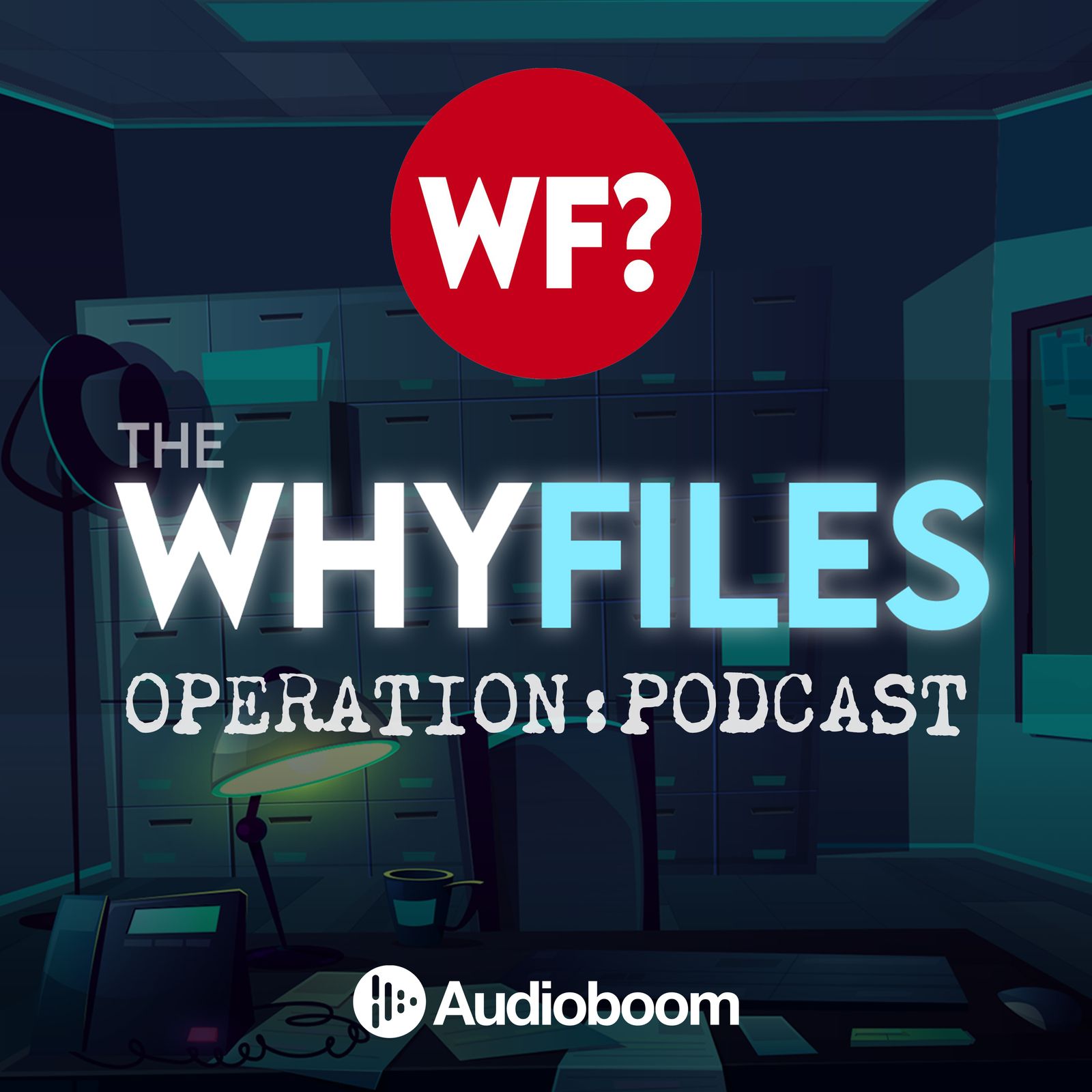Fully Modulated
Fully Modulated is your backstage pass to the stories and signals that shaped radio, TV, and wireless communication. Join Tyler, a broadcast engineer, as he uncovers the wild moments, quirky legends, and technical breakthroughs that keep the world connected. From vintage radio hacks to the real drama behind today’s digital waves, each episode blends deep research, humor, and storytelling for anyone curious about how media magic happens. Independent, insightful, and made for every fan who loves a good broadcast mystery.
Fully Modulated
How FCC Spectrum Auctions Push Broadcasters Toward Internet-First Delivery
The ground under broadcast distribution is moving, and the question isn’t whether C-band was reliable—it’s how we keep that reliability as the FCC clears and auctions more of it. We dive into the real tradeoffs facing stations of every size, from small-market radio shops without diverse fiber routes to major TV groups juggling national feeds. Along the way, we unpack why C-band earned its reputation, where Ku-band helps and hurts, and how to design delivery paths that survive storms, backhoes, and the odd cloud hiccup without your audience ever noticing.
From leased analog lines to microwave relays to satellite and now IP, the throughline is simple: everything breaks, so redundancy wins. I walk through practical, field-tested ways to build layered resilience: pair primary fiber with Starlink and a 5G router, bond multiple ISPs, and use protocols like SRT and RIST for secure, resilient transport. We get specific about automated failover, health monitoring, active testing during off-hours, and the runbooks that turn chaos into a two-second blip. If you’ve been skeptical of the public internet for mission-critical delivery, it’s time to revisit the data—today’s multi-path IP can match or beat satellite uptime when designed with path diversity and smart routing.
You’ll hear how larger broadcasters are already sending primary feeds over fiber with satellite or cellular as clean backup, why LEO constellations change rural options, and how to think about cloud dependencies without losing sleep. The goal isn’t a single perfect solution; it’s a hybrid system that spreads risk and recovers fast. Whether you’re planning for the next spectrum shift or upgrading a small station on a tight budget, these tactics help you protect airtime, revenue, and trust.
If this conversation sparks ideas—or pushback—I want to hear it. Send your questions and war stories, share the episode with a colleague who runs the board at 3 a.m., and hit follow so you don’t miss what’s next. If it keeps your signal alive, it belongs here.
Send me a text message with your thoughts, questions, or feedback
Visible Wireless by Verizon
Same Verizon coverage, way cheaper bills. No contracts or hidden fees. $20 off for both of us.
If you enjoyed the show, be sure to follow Fully Modulated and leave a rating and review on Apple Podcasts or your favorite podcast app—it really helps more people discover the show.
Fully Modulated is not affiliated with or endorsed by any station, media company, or network. All opinions are solely my own.
Welcome to Fully Modulated. I'm Tyler, and today we're taking a look at the FCC's new plans to clear and auction off more of the C-Band spectrum. Something that's definitely turned into a hot topic for just about, I guess, everyone in radio and television and well the broadcast engineering community. As always, uh, just a quick disclaimer: this show isn't sponsored by any stations, companies, or networks. I've been at this since 2014, started as a broadcast engineer in 2018, and now work on the network side of things in 2025. So, what you're getting is the perspective of someone who's I guess seen a lot of changes from the engineering trenches. So let's start at the beginning. Why does C-BAN even matter? Well, it's that chunk of spectrum from 3.7 to 4.2 GHz. And it's basically the backbone for moving signals coast to coast. If you're pushing live news, sports, or network feeds, you're almost certainly relying on a C-band dish somewhere in the transmission chain. It's rock solid, especially in bad weather, and nothing has quite managed to replace it for wide area broadcast reliability. Those dishes are still getting the job done day after day, year after year. Now, let's bring it back to today because the landscape is shifting once again. With all the talk about next gen wireless and the FCC's big plans for auctioning off more of this spectrum, broadcasters find themselves standing at another crossroads. The pressure's growing, the deadlines are set, and the questions are getting a lot tougher. Are we headed toward a future where the old C-band workhorse fades into the background and new delivery methods take the spotlight? Suddenly, it feels like everybody from tiny FM stations in the sticks to giants in the big cities have some skin in the game. Again, it's got a lot it's got a lot of folks on the edge. When we all had to move to the upper half of the C-BAN after the last big auction, just making that transition took years and a lot of money. Not to mention a ton of retooling at stations of every size and flavor. Now what's left to clear is even tougher. Sure, people are experimenting with KU band satellites, but KU, those are more sensitive to storms and not always as reliable as C-Band, especially for critical 24-7 feeds. And then you've got folks saying, well, just use fiber. Great in a perfect world, but let's be honest, if you're at a small TV or radio station out where the deer outnumbered the people, that fiber pizzazz is usually more of a nice idea than a realistic approach. But before we get too caught up in what's next, I mean it's worth kind of going back and looking at where we came from. The path our signals take has always been a moving target. I mean, think about it. Early on, radio and TV networks leaned on leased phone lines. Some of these old networks moved program feeds on analog lines with more hum and crosstalk than Clarity. People would literally ship tapes and reels through the mail for syndication. Then came microwave relays, and eventually that first jumped the satellite. When the when C-BAN satellites really hit the scene, suddenly you could sling a live feed across the continent without breaking a sweat. For decades it felt like we had solved the problem. Just put up a dish, dial in the right frequency, and you were golden. But this industry is built on change, right? We see it every single day. New codecs, new lines, digital links, ISDN, and then everyone tiptoes in IP. Now here we are debating if the internet is solid enough for Showtime. This is where that mindset shift becomes everything. Because in every era, smart engineers plan for things to break. No delivery method has ever stood supreme over the other. Everything from phone lines to satellite has had its fair share of outages, surprises, and technical gremlins. So no matter what delivery path you pick, failover's not a nice thing to have. It's the only way to keep things moving. When Lightning takes out a dish or construction crews slice through your fiber in the street, true failover today doesn't mean just plugging in a backup and forgetting it. It's about building redundancy. Fiber, Starlink, 5G routers, you name it. And actively testing those backups so they're ready when you need them. Kill your main feed in the off hours, of course. Watch how fast your system flips over and fix what's slow. If you're only finding out your backup feed is broken when the main goes down, you don't actually have a backup. And really none of this is new. What's different now is just how many ways you can actually create the redundancy that you need. It used to be uh you'd have a backup satellite dish or maybe a second microwave hop, but now you can mix and match terrestrial internet, multiple ISPs, cellular, LEO satellites, combine them as needed, layer them up, and suddenly you're not waiting for one fragile link to hold it together. Broadcast engineering in this moment is really about knowing old habits, embracing what works from the past, but not getting stuck there. It's about watching for new tools, testing the heck out of everything, and not being shy about breaking your own setup on purpose just to see if it bounces back okay. So, where does this leave us? It actually sets up the perfect segue into the conversation that, honestly, more broadcasters need to be comfortable with using the public internet for delivery. I know. Seriously, for years, the idea of putting anything critical over public IP was a joke. Outages, last mile issues, weird latency spikes. I used to be one of the skeptics, but it's not like that anymore. Technology has caught up. I mean, these days you can easily have a setup with two or three separate internet links, completely diverse. Run, let's say, you run a fiber line, tack on a Starlink satellite dish for backup, throw in a 5G router into the mix, and now all your systems can shuffle traffic between them on the fly. It's actually wild how well this stuff actually works, especially even compared to just five years ago. Broadcasters, you've got to stop being so scared of internet delivery. Sure, IP had a rocky pass, but the reliability now is often on par, if not better, than satellite. Given decent redundancy. Engineers are cobbling together failover chains that just switch over automatically if one path drops. These are managed service providers out. You know, there are managed service providers out there who specialize in keeping program audio up no matter what. Even if someone's digging up cables all over town. That uh backhoe fade. And if you're worried about what happens if AWS goes down or one of the big cloud guys has a bad day, that's honestly a problem for the content distributor or platform. The station engineer doesn't have to lose any sleep over something out of their hands. As long as connections at the station are as bulletproof as you can make them, you can rest easy. Of course, every system has its uh-oh moments. Fiber, satellite, even cell networks, they all go down at some point. That's it's just the reality. But we've got way more ways to keep things on the air now. You want resiliency? It's about using the best tools. Spread your risk, use them all. This isn't about some perfect magic bullet solution anymore. It's about using the best tools from every tool belt and building real layered redundancy into your station's workflow. People are talking about hybrid systems, mixing fiber, IP, delivery, satellite, even LEO, constellations like Starlink and Amazon. And yeah, some larger broadcasters are already sending maiden feeds over fiber with satellite or 5G as a backup, and it's working better than most of us ever expected. Back in the internet, can't do live days. So when the FCC clears more C-BAN, it's not the end. It's a new curve in the road. And if you're willing to adapt, try new combinations, and make resilience your number one goal, you're gonna be just fine. If not, well, radio's always got room for another wild story about the day everything failed, but the audience somehow never knew. That brings us to the big picture. The C-band debate is writing the next chapter of how America's radio and television signals reached our audiences. If you're wrestling with any of this at your day job or just nerding out over the technology, don't hesitate to get in touch. I'd love to hear what you're going through at your station or what your plans are, the solutions that you've found, or the new tools you're using to keep the signals moving. Thanks for hanging out with me for another episode of Fully Modulated. Drop a comment or shoot me an email to Tyler at Fulymodulated.com. Don't forget to follow Fully Modulated on Facebook, Instagram, and Blue Sky. There's always something new to figure out in this business. And I mean, we'll be here diving into it. I'll catch you next week.
Podcasts we love
Check out these other fine podcasts recommended by us, not an algorithm.

The Why Files: Operation Podcast
The Why Files: Operation Podcast
Sightings
REVERB | QCODE
This Week In Radio Tech (TWiRT)
guysfromqueens
The Ezra Klein Show
New York Times Opinion
Alive with Steve Burns
Lemonada Media
Friends Who Pretend
Chris Bryant
99% Invisible
Roman Mars
Hard Fork
The New York Times
The 404 Media Podcast
404 Media
Search Engine
PJ Vogt
Pod Save America
Crooked Media
Darknet Diaries
Jack Rhysider
StarTalk Radio
Neil deGrasse Tyson
Hasan Minhaj Doesn't Know
186k FilmsTechdirt
Techdirt
IT Horror Stories
NinjaOne
